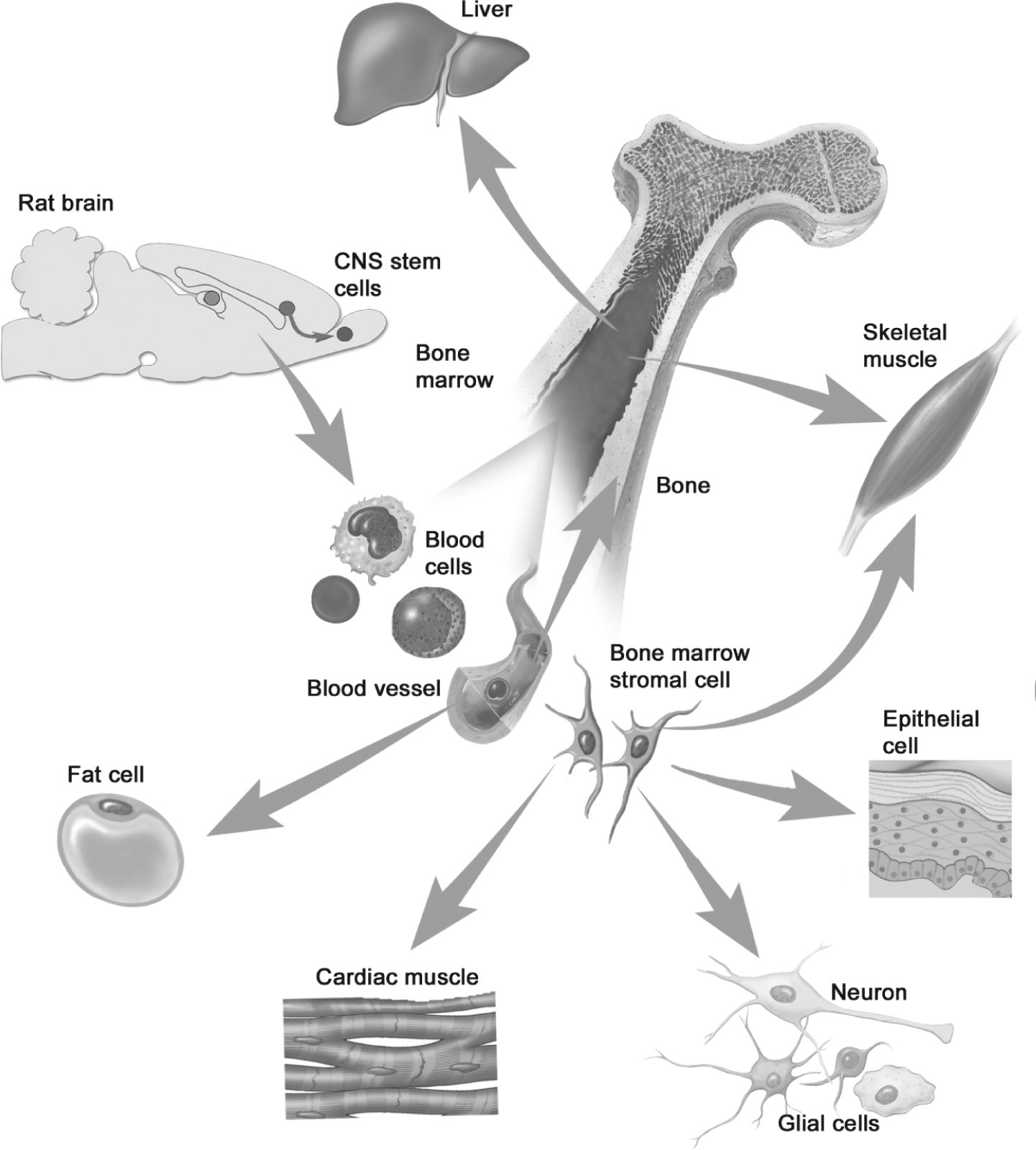These develop a few days after an egg (ovum) is fertilised by a spermatozoon and starts developing to form an EMBRYO. They contain a specialised ENZYME that gives them the facility to divide indefinitely, developing into the many different specialised cells that comprise the various tissues in the body – for example, skin, blood, muscle, glands or nerves.
It is possible to stimulate stem cells, in the laboratory, to provoke them into developing into many of the various specialised cells that develop naturally in the body. Most national governments have passed legislation constraining the use of human embryos in research (see ETHICS) and the ethical aspects of taking this stem-cell culture technique forwards will have to be resolved. Nevertheless, this discovery points the biological way to the use of genetic engineering in selecting differentiated specialised cells from which replacement tissues could be grown for use as transplants to rectify absent or damaged tissues in the human body.
It is also possible to work with adult stem cells; where this is successful it becomes unnecessary to use fetal tissue. Five distinct types of adult stem cells have been identified: haemopoietic stem cells can turn (‘differentiate’) into all types of blood cells; bone marrow stromal cells can differentiate into cartilage, bone and fat; neural stem cells can produce neurons and their supporting cells – astrocytes and oligodendrocytes; epithelial stem cells within the intestines can differentiate into cells that produce enzymes or absorb foodstuffs; skin stem cells can produce skin. Some cells are pluripotent – that is they can differentiate into various, apparently unrelated cells. For example, neural stem cells can be stimulated to produce blood cells. This ability is called ‘plasticity.’

How stem cells from rat brain can give rise to many different types of body cells.
Research into potential use of stem cells has raised expectations that in the long term they may prove to be an effective regenerative treatment for a wide range of disorders including PARKINSONISM, ALZHEIMER'S DISEASE, type-2 diabetes (see under DIABETES MELLITUS), myocardial infarction (see HEART, DISEASES OF), severe burns, osteoporosis (see under BONE, DISORDERS OF) and the regeneration of blood to replace the need for BONE MARROW TRANSPLANT. However, at present stem cell research has proved of more use in providing material to be used in laboratories for undertaking testing of various types, for example to investigate the safety of certain drugs on human tissues. This may reduce dependence on human volunteers for this purpose.